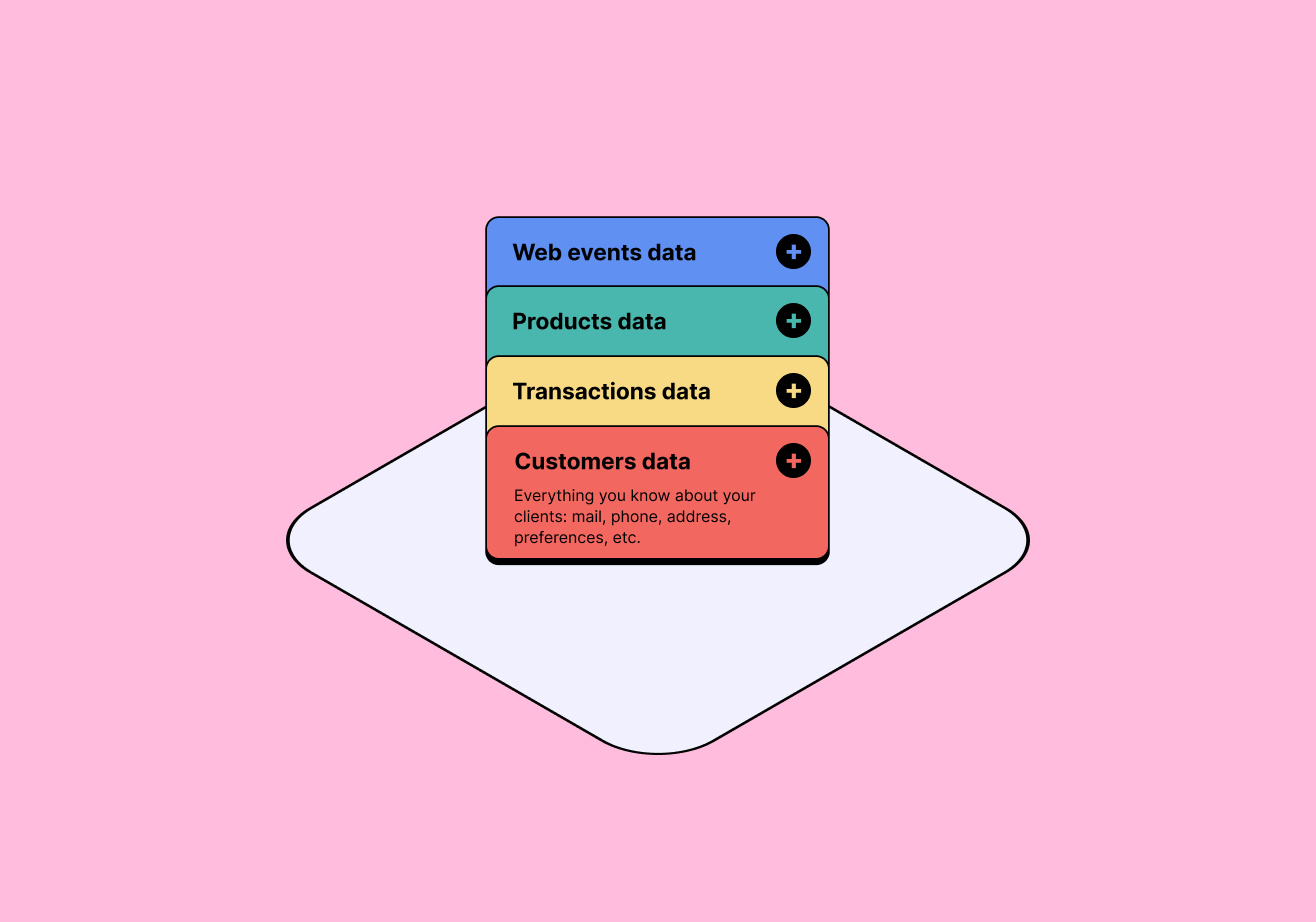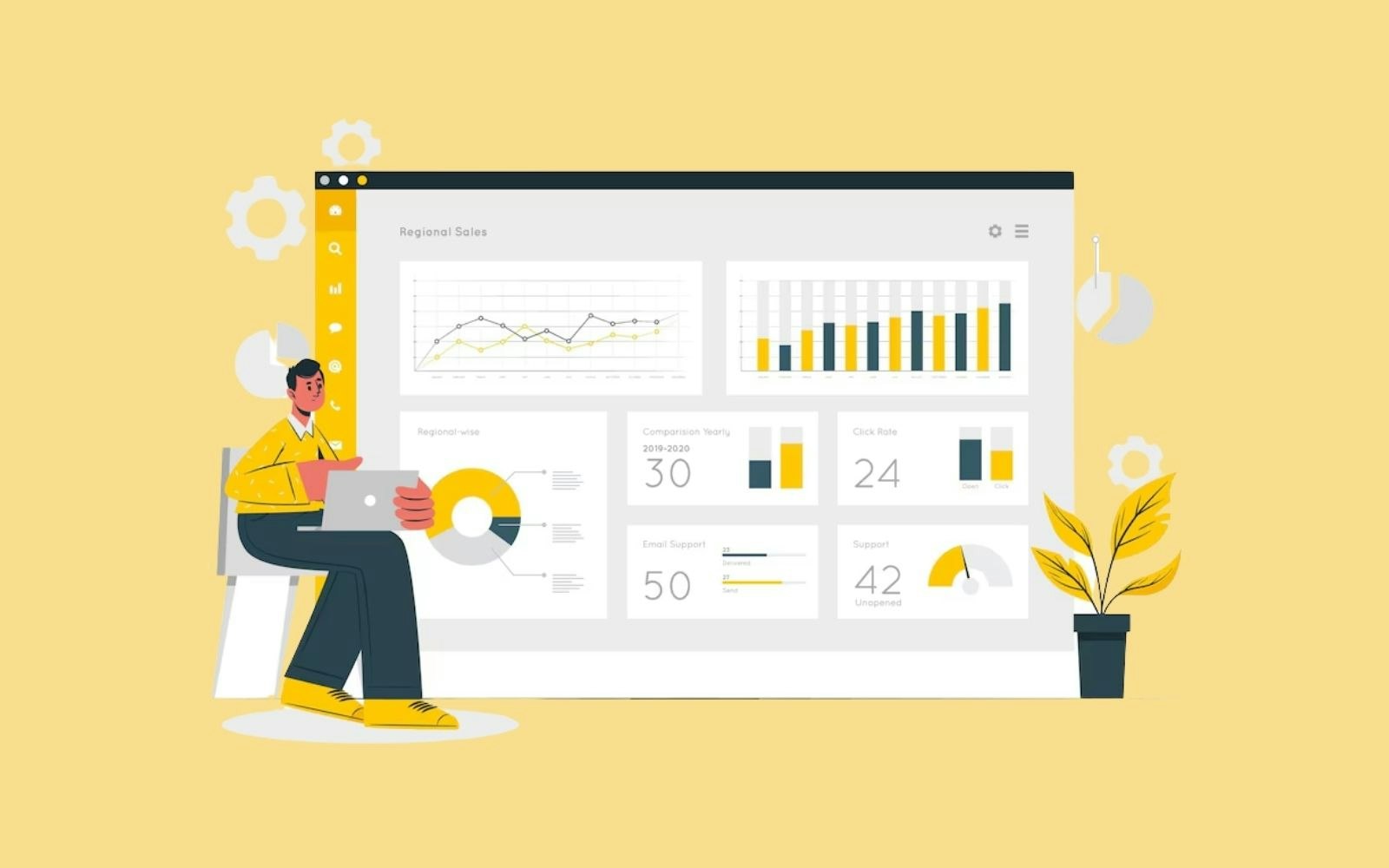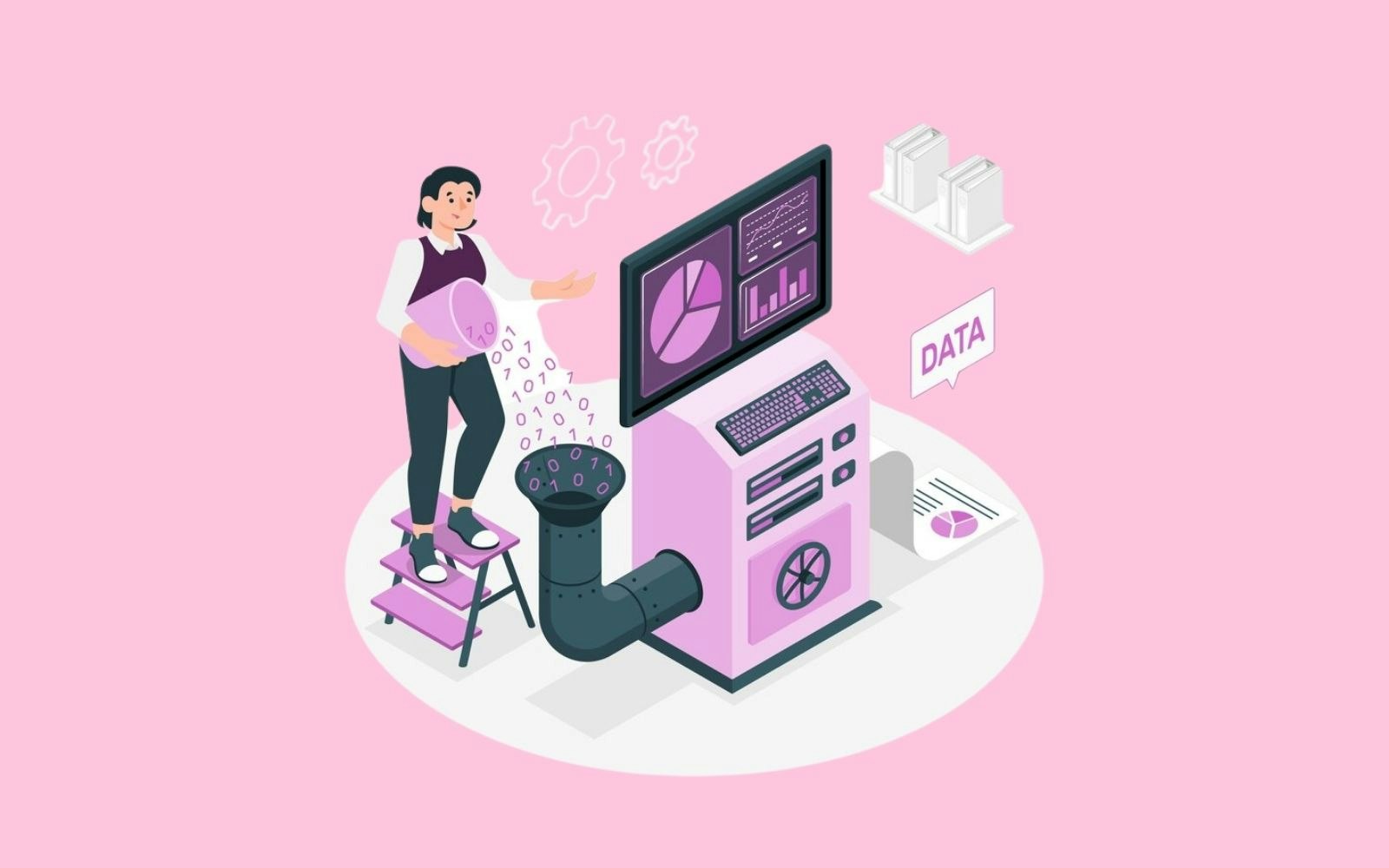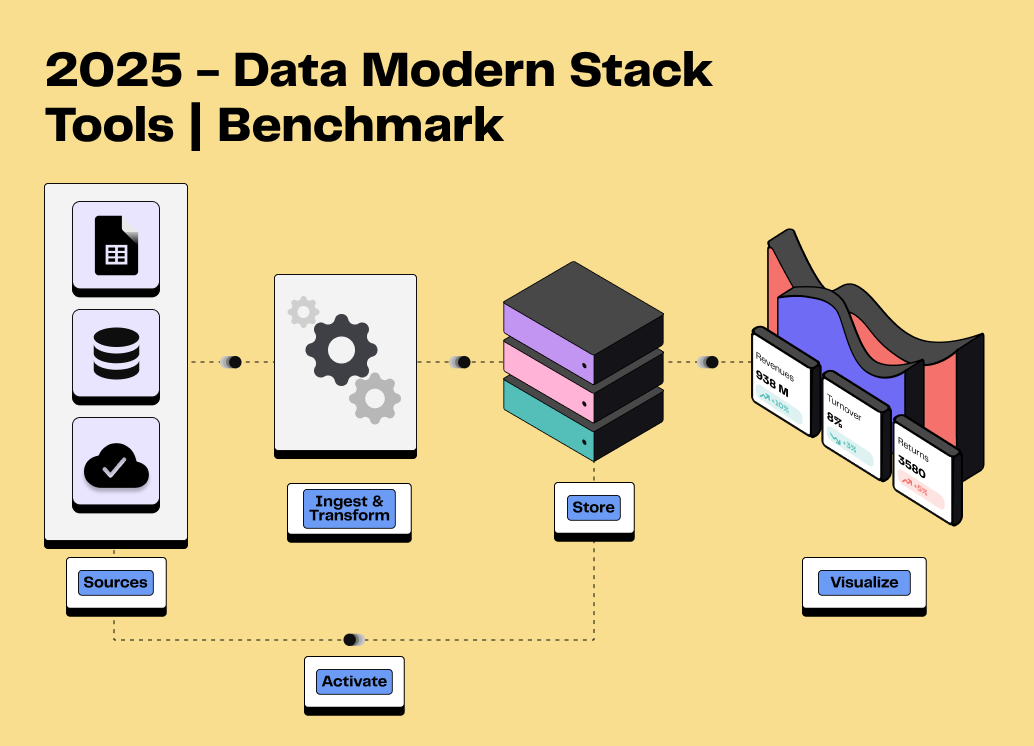
Data governance: the cornerstone of your data strategy
6min • Last updated on Apr 24, 2025

Olivier Renard
Content & SEO Manager
You’ve no doubt noticed, it’s become increasingly common. Every week, new companies report data breaches or security vulnerabilities.
Large organisations are particularly affected. The number of incidents significantly increased between 2023 and 2024, according to the ICO.
In a world where data is a strategic asset, these incidents come at a high cost. Not just in terms of fines or reputational damage, but also lost productivity and missed opportunities.
Data governance is an essential pillar for any organisation looking to make the most of its data, without losing control.
Key Takeaways:
Data governance refers to the set of rules and practices that govern how data is used within an organisation.
It clarifies responsibilities, secures access, and improves data quality for better utilisation.
A well-defined governance framework supports compliance (UK GDPR, Data Protection Act) and strengthens trust around data usage.
It’s a core component of the Modern Data Stack, serving security, performance, and business strategy.
👉 Learn more about the strategic role and benefits of data governance. Understand how to organise, secure, and harness your data to drive business performance. 🔍
What is data governance?
Data governance refers to the collection of rules, responsibilities, and processes that define how data is used across an organisation.
Its main objective is to ensure data is reliable, secure, accessible, and used appropriately. It guarantees that everyone in the company accesses the right data, at the right time, within a framework of trust and compliance.
Governance is distinct from related concepts like observability or data management.
Concept | Main role | Example of use |
|---|---|---|
Data Governance | Define rules and processes | Manage access, set standards |
Data Management | Operate data flows and processing | Integrate, store, archive |
Data Stewardship | Enforce rules on a day-to-day basis | Ensure data quality and compliance |
Data Quality | Ensure data accuracy and consistency | Remove duplicates, correct errors |
Data Observability | Monitor overall data health in real time | Detect anomalies in pipelines |
The differences between data governance and other data management and quality functions
💡 Let’s step away from data for a moment with a familiar analogy: your personal finances. You want to know where your assets are, who can access them, how they’re used, and whether they’re in good shape.
It’s the same with data: without governance, it loses value and reliability and introduces risk.
Roles, responsibilities and scope
Effective data governance relies on cross-functional collaboration between leadership, data teams, business departments and compliance officers. It involves several key roles:
Chief Data Officer (CDO): oversees overall data strategy.
Data Protection Officer (DPO): ensures regulatory compliance (GDPR, Data Protection Act…)
IT / Data Engineering teams: build and maintain the technical architecture and governance tools.
Business teams (marketing, product, sales, finance...): use the data in their daily operations.
Data stewards: ensure data quality, naming conventions, and maintain shared reference frameworks.
💡 For instance, IT teams manage access rights, while business users rely on the definitions and standards maintained by data stewards.

Data Quality Metrics
Why is governance essential?
Data governance addresses four key needs: clarifying decision-making, defining internal rules, ensuring regulatory compliance, and deploying the right technologies.
Security and compliance
In the age of regulations like General Data Protection Regulation (GDPR) or the Data Protection Act (DPA), data protection is no longer optional. Governance structures ensure proper usage and full traceability throughout the data lifecycle.
Governance ensures the quality, security, and monitoring of data at every stage of its lifecycle. It defines how data is used and processed: preventing unauthorised access, managing retention periods, handling modifications, right to erasure, etc. In the event of an audit or incident, every action is documented.
It supports compliance with legislation such as the UK GDPR and DPA. These laws impose strict rules around data protection, access, sharing and transparency.
Compliance becomes a trust-building mechanism, both internally and externally.
Data quality and integrity
Incomplete, incorrect or siloed data undermines team efficiency and leads to poor decision-making. A robust governance framework helps identify duplicates and inconsistencies while enforcing clear processing rules across all sources.
Metadata (definitions, calculations, history...) is centralised, and reference datasets are shared: everyone works from the same, up-to-date, documented information.
It’s the foundation of a strong, data-driven strategy.
A performance driver
Data governance is more than just control. Beyond compliance, it also acts as a driver of business performance.
It ensures teams work with accurate indicators, underpinned by high-quality, accessible data. It fuels dashboards and facilitates informed decisions. It aligns data, IT, marketing, and business functions.
It’s also a prerequisite for advanced use cases like AI projects, analytics, customer personalisation, or Customer 360. With well-governed first-party data, companies can thrive even without third-party cookies.

Leverage your first-party data in a cookieless world
How to implement an effective strategy?
Main steps
Implementing data governance requires structure and clarity. Follow these key steps:
Map your data: identify data types, sources and uses across the business.
Assign owners: each domain should have a data owner responsible for quality and compliance.
Define the rules: security, access, quality, sharing etc. Governance depends on clear, documented policies.
Establish a clear structure: define roles (CDO, DPO, business users), processes, and select appropriate tools.
Best practices
A successful strategy involves practical actions:
Create a data catalogue to centralise and document metadata. A crucial prerequisite for making data easier to find, understand, and reuse across all departments.
Limit data collection to what is strictly necessary (principle of minimisation). This is one of the core principles of the GDPR. Collecting less data also means reducing the risk in case of a breach or misuse.
Implement regular monitoring: quality audits, dashboards, and reliability indicators. All essential tools to identify risks and improve data practices.
Train teams and foster a shared data culture across the organisation. Effective governance depends just as much on the right tools as it does on employee engagement.
💡 A good governance strategy is not static. It evolves with usage, tools, and regulations.
Challenges to anticipate
Internal resistance and alignment
Governance projects may fail without buy-in. Cultural barriers, unclear roles, and persistent silos can all pose issues.
Engage stakeholders early. Secure leadership support, appoint internal champions, and manage change with clear communication.
Technical complexity and scalability
Multiple data sources, legacy architecture, technical debt, growing volumes: all of these make scalability difficult.
To address this, rely on modern tools, clear governance standards, and automated controls.
What tools can support data governance?
Once your data governance project is clearly defined, it’s time to select the right tools. These are designed to ensure data quality, traceability, and responsible usage. Here are the main technologies:
Tool | Primary use | Main providers |
|---|---|---|
Data catalog | Document the available data and its metadata. | Atlan, Collibra, Alation |
Data lineage | Track data flow from source to usage | OpenLineage, Apache Atlas |
Data quality tool | Ensure data validity, consistency, freshness | Talend, Monte Carlo, Soda |
Master Data Management (MDM) | Unify core reference data (customers, products...) | Informatica, Reltio |
Data governance tools
Modern Data Stack and governance
Cloud tools have reshaped data architecture over the pas few years: data warehouses, ETL, Reverse ETL, orchestration, BI, observability, and more. Each component plays a role in organising, accessing, and securing data.
Governance must integrate with this modern data stack seamlessly. It should follow data flows, support usage, and enforce secure access.
A Customer Data Platform (CDP) can unify, segment, and activate data across marketing tools – as long as it complies with governance rules: traceability, access rights, retention.
👉 DinMo’s composable CDP activates data directly, without duplication, from your single source of truth, your data warehouse. It fits neatly into your existing stack and respects your governance policies.
Conclusion
Data governance is more than a technical or regulatory requirement. It’s a strategic asset to ensure data reliability, secure usage, and value creation across the organisation.
It aligns teams, structures processes, and builds trust both internally and externally.
👉 DinMo helps you activate your data directly from your data warehouse, in full compliance with your governance policies. Build a data strategy that’s modern, reliable, and scalable.
FAQ
Does data governance only apply to large companies?
Does data governance only apply to large companies?
Not at all. Data governance is essential for any organisation looking to use its data reliably and securely. Even an SME collects customer, financial or HR data.
Without a clear framework, the risks increase: inaccurate analysis, non-compliance with the UK GDPR, and biased decision-making. Good governance helps structure data usage, ensures data quality, and facilitates collaboration between teams.
Smaller organisations can start simply, by defining clear rules and choosing suitable tools. It’s a competitive advantage, not a constraint reserved for large corporations.
Why is data governance strategic in marketing?
Why is data governance strategic in marketing?
In marketing, everything hinges on data quality. A well-thought-out governance framework ensures that the information used for segmentation, personalisation or analysis is reliable, up to date and actionable. It helps avoid duplicates, incorrect targeting or biased campaign insights.
It also strengthens collaboration between data, CRM and acquisition teams. By structuring data flows, organisations save time, improve marketing performance and stay compliant with legal requirements.
Data governance becomes a strategic asset for delivering the right message, at the right time, to the right person.
How can you measure the effectiveness of data governance?
How can you measure the effectiveness of data governance?
Effectiveness is measured through tangible indicators. These may include data completeness, error rates, the number of identified duplicates, or the time it takes to retrieve a piece of information.
You can also track the reduction in data-related incidents (e.g. poor segmentation) or improvements in marketing activation rates. Another key metric is regulatory compliance, particularly with the UK GDPR.
If teams can easily access the data they need, in the right format, and if campaigns perform better, that’s a strong signal. Governance should be both measurable and adaptable, always in support of business performance.
















